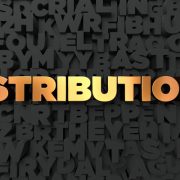The Significance of Age 70 ½ On Your Self-Directed IRA
Although you can enjoy the flexibility having a Self-Directed IRA brings you in planning for your retirement, it helps to have an awareness of likely changes when you reach the age of 70 ½.
In most cases, at that point you would need to start taking RMD’s, which stands for Required Minimum Distributions. You would be able to determine the amount of your monthly distribution, but with respect to a required minimum each month.
There are a number of elements of planning for this scenario. Most likely, you need to have an amount of cash on hand within your Self-Directed IRA in order to meet the coming RMDs.
This is an important consideration if your Self-Directed IRA has all of its money in real estate (property or properties) or precious metals. While the possibility exists for a distribution of property or an asset could be the option of satisfying the minimum required, there would be the need to justify the valuation of the property or asset. This is necessary in order to have proof to the IRS that the minimum requirement has been met each month, which could result in additional costs.
If this situation is possible, it could be worth considering the cost of the penalty for not meeting the monthly requirement against the cost of justifying the value of the property or asset.
Your best decision of how to handle this upon reaching the age of 70 ½ is better determined by your personal and/or family situation. Whether or not you need the funds to live from month to month is one important factor in making that determination.
If you need the funds, you can arrange for a monthly distribution well above the required minimum. You are not required to wait until age 70 ½ for this to happen. This makes it likely that you have cashed out on some or all of the property or assets owned in order to have these funds available.
There are several options available if you are fortunate enough to not need the funds for monthly financial support. This is where the RMD comes in. Your advisor can help you with determining the exact amount and how much liquid cash needs to be available over what period of time.
Another possibility is what is known as Legacy Planning. Your Self-Directed IRA also has the option of allowing a child or family member to inherit the entire remaining balance upon your death.
Tax consequences are different for the receiver of this fund and should be addressed ahead of time in order to protect as much of the money and/or assets as possible.
Selecting Legacy Planning does not eliminate the RMD. In addition to providing for a loved one long term, it should be structured to not suffer any added tax consequences prior to being passed along.
One other aspect to planning for age 70 ½ and beyond is your Social Security status. Income from Social Security is taxed based on the income of the individual or combined income of a married couple.
When the combined income or a married couple is greater than $44,000, up to 85% of Social Security is subject to being taxed. To clarify, if the monthly SSI payment is $1,000, the amount taxed would be determined based on a maximum of $850 because of the 15% being tax free.
Lower income individuals and couples face up to 50% of the amount being subject to tax.
Your best option is to prepare for reaching age 70 ½ reasonably ahead of that event. Such preparation could assure you of having cash available to take your RMD, having funds available to receive larger monthly payments, continuing with your overall investing plans, and/or having assigned a beneficiary for the balance. Your advisor will help you with your strategy.
Regardless of your overall financial situation when the time comes, your Self-Directed IRA provides you with the best possible option for your retirement years.
Interested in learning more about Self-Directed IRAs? Contact American IRA, LLC at 866-7500-IRA (472) for a free consultation. Download our free guides or visit us online at www.AmericanIRA.com.



